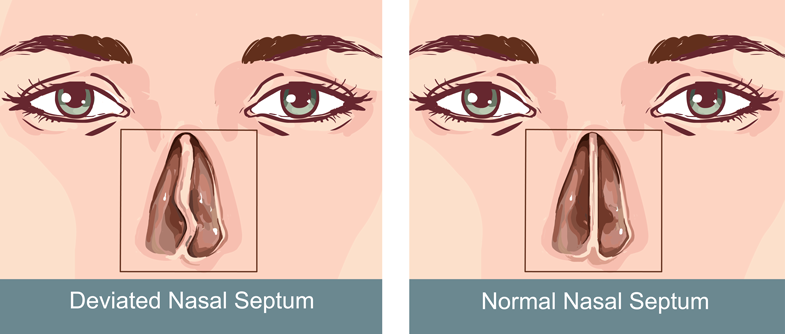
Nasal congestion that has been going on for a long time is one of the reasons people visit an ENT specialist. Many people think that a stuffy nose for a long time is a symptom of sinusitis, even though the person may be suffering from swelling of the konka.
Konka ( inferior turbinate ) is an indented structure on the lateral or inner side of the nose and is lined by mucosa. The conchae have a function to protect the nose by regulating the temperature and humidity of the air that enters when breathing and filters out foreign objects that are inhaled along with the incoming air. Enlargement of the turbinates ( turbular hypertrophy ) can occur and cause airflow through the nose to be obstructed, causing various symptoms, such as nasal congestion, shortness of breath, and forehead pain.
Causes of Konka Hypertrophy

Konka hypertrophy can be caused by deviation of the contralateral septum as compensation to protect the nasal mucosa from drying due to excess airflow ( unilateral turbinate hypertrophy ) and can also be caused by allergic rhinitis and non-allergic rhinitis. Environmental factors (dust and tobacco) and pregnancy can also cause swelling of the turbinates.
Apart from feeling a blocked breath, some patients with turbinate hypertrophy complain of the following conditions:
- Pain at the bridge of the nose or midface
- Headache resembling a migraine
- A feeling of pressure on the forehead
- Prolonged colds
- Nasal allergy symptoms such as frequent sneezing, itchy nose, watery and itchy eyes
- Feels there is snot that is difficult to remove
- It's easy to have nosebleeds (nosebleeds) due to blowing your nose too hard
- Sleep snoring or with open mouth.
Diagnosis of Konka Hypertrophy

Before determining the type of treatment to be received, a specialist doctor will make a diagnosis through anamnesis, physical examination, and supporting examinations, such as radiology, rhinomanometry and peak nasal inspiratory flow (PNIF). Anamnesis will be carried out carefully, especially to find out if there is a history of nasal obstruction caused by turbinate hypertrophy or other complaints. Physical examination can be done with anterior and posterior rhinoscopy, while supporting examinations can be done to determine the amount of airflow and air resistance in the nasal cavity.
Treatment of Konka Hypertrophy

Treatment of Konka Hypertrophy patients can be done in two ways, medical treatment or surgery. Medikamentosa is carried out to overcome etiological factors and nasal obstruction by reducing the size of the turbinates by administering topical decongestants. Medical therapy may involve administration of antihistamines, decongestants, corticosteroids, mast cell stabilizers, and immunotherapy.
In cases of chronic turbinate hypertrophy where connective tissue has formed as a result of chronic inflammation that no longer responds to medication after two months of treatment, an operative procedure can be performed. Operative action can be done by reduction of the turbinates using radiofrequency technology. The latest technology that is now present at EMC Sentul Hospital is able to reduce the size of the turbinates with minimally invasive surgical techniques, namely Radiofrequency (RF) techniques. This technique uses modern equipment, Sutter-Curis from Germany. The procedure is carried out using a minimally invasive surgical technique without the need for an incision, so that the postoperative risk will be minimal compared to conventional techniques.
If you experience prolonged nasal congestion or experience the symptoms above, immediately consult your problem with an ENT specialist. You can consult with dr. Edo Wira Candra, M.Kes, Sp.THT-KL from EMC Sentul Hospital on Tuesday & Saturday at 08:00 - 10:00 WIB and Wednesday & Friday at 08:00 - 15:00 WIB.
Let's always take care of your health and that of your family by maintaining a healthy lifestyle every day. #LiveExcellently
Also read: Face Pain Like Depression? Watch out for rhinosinusitis
